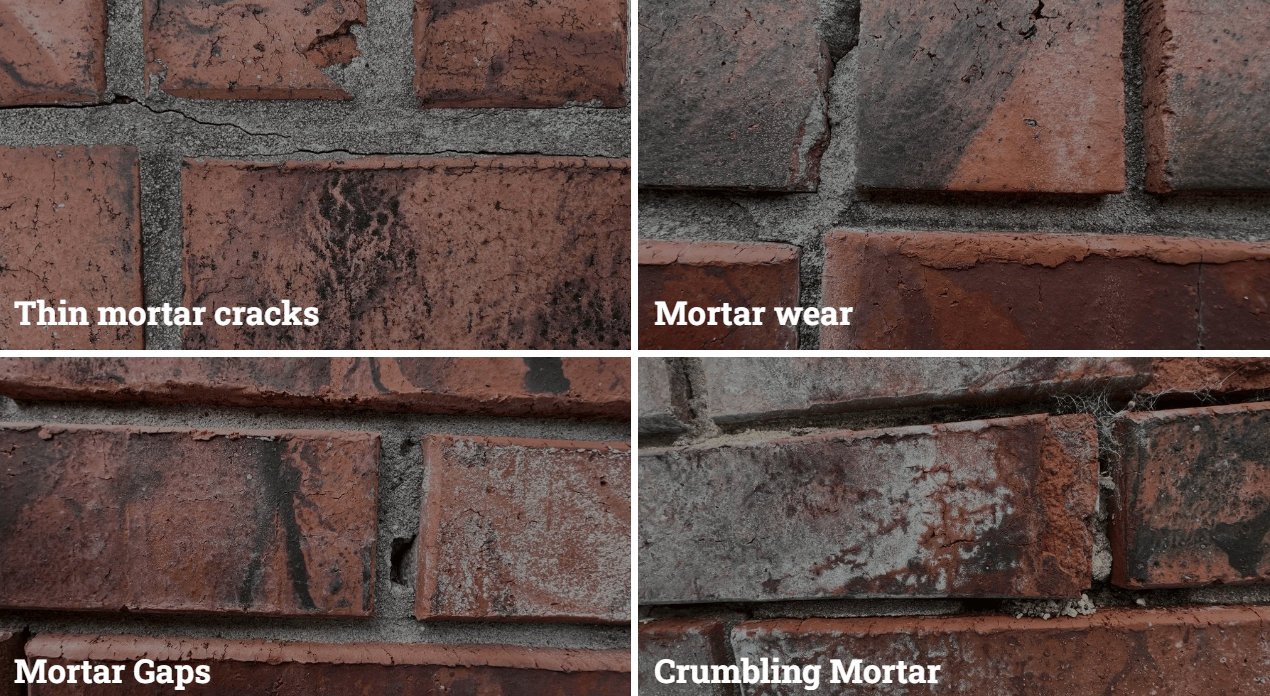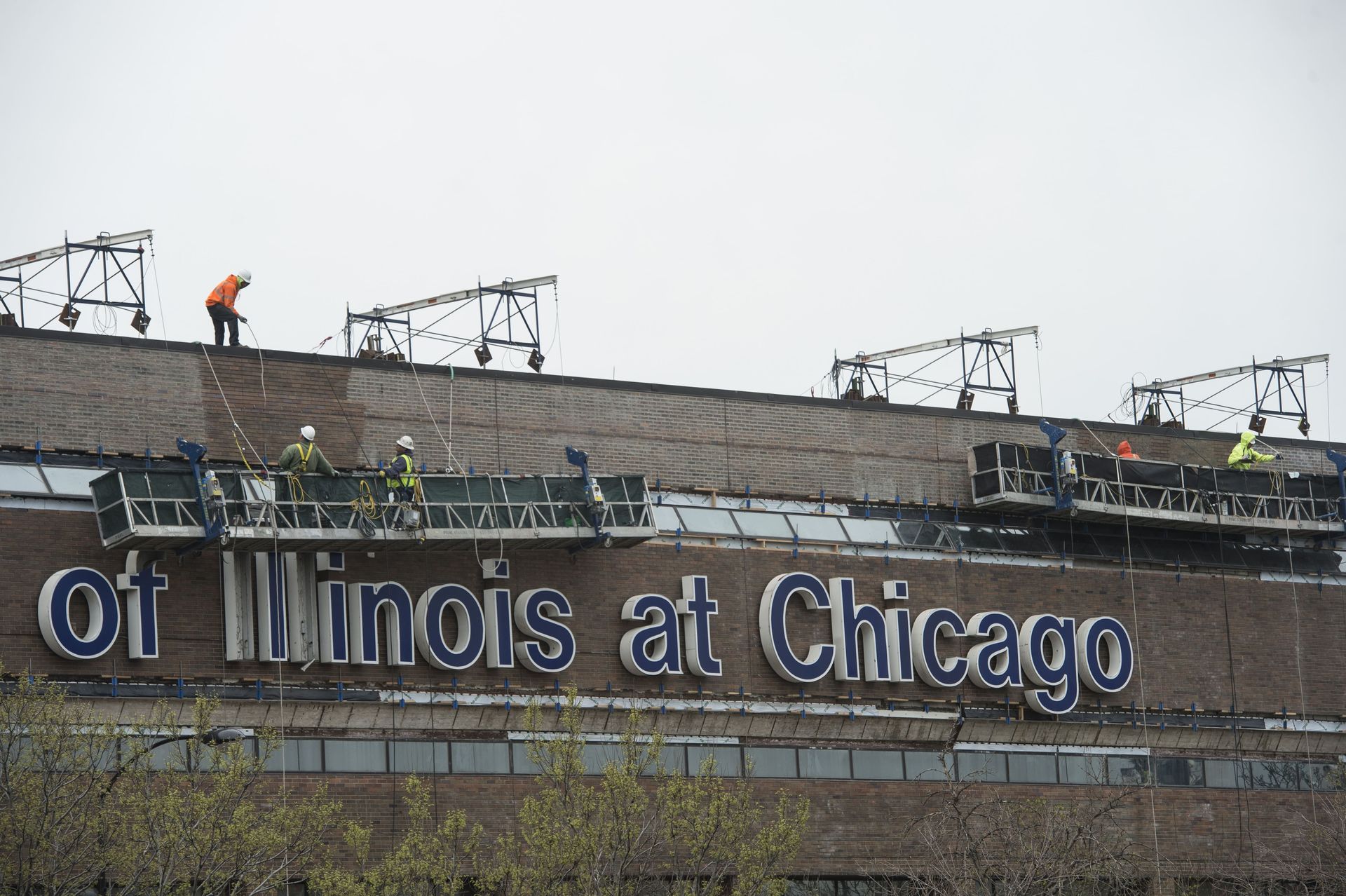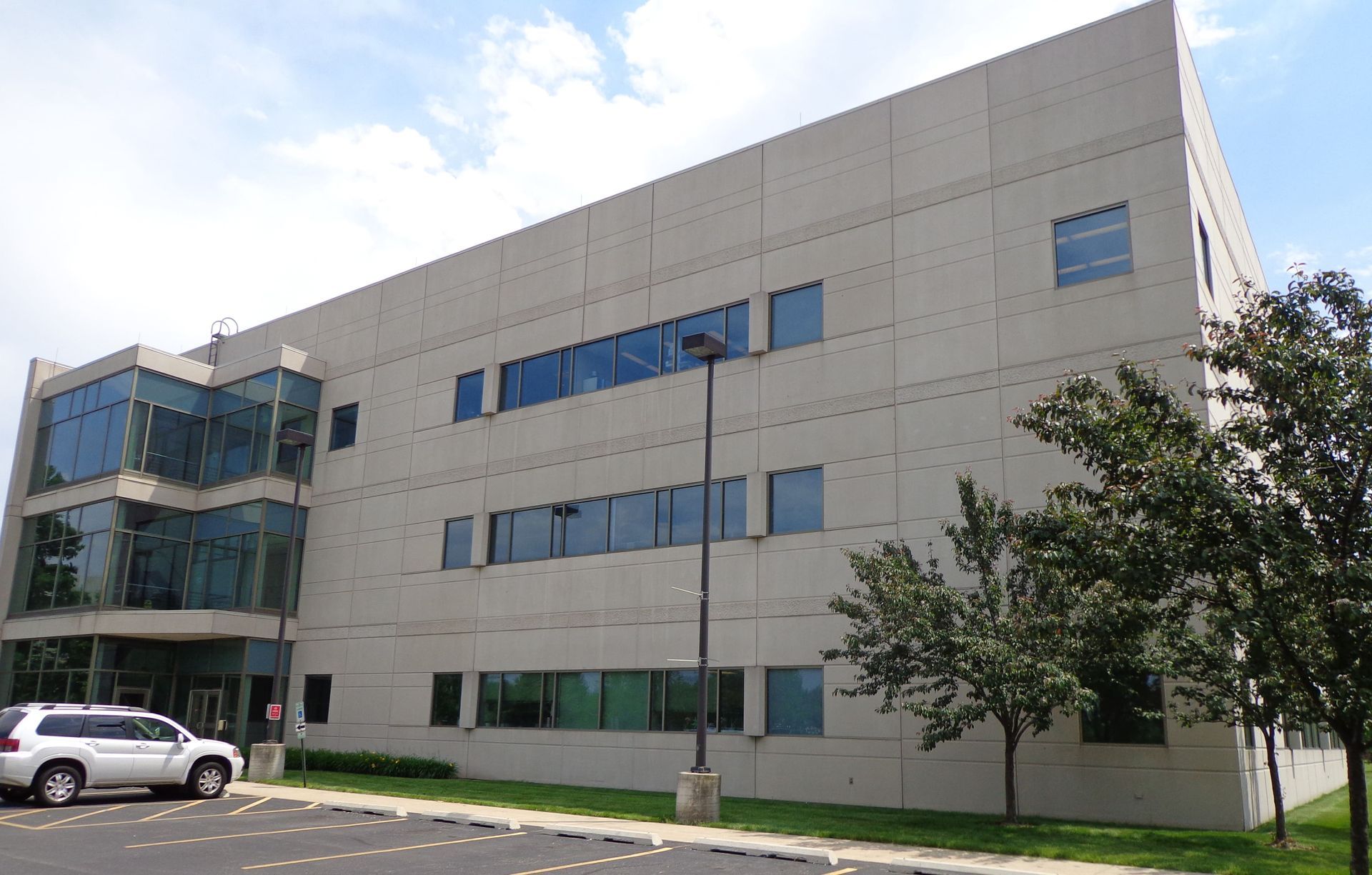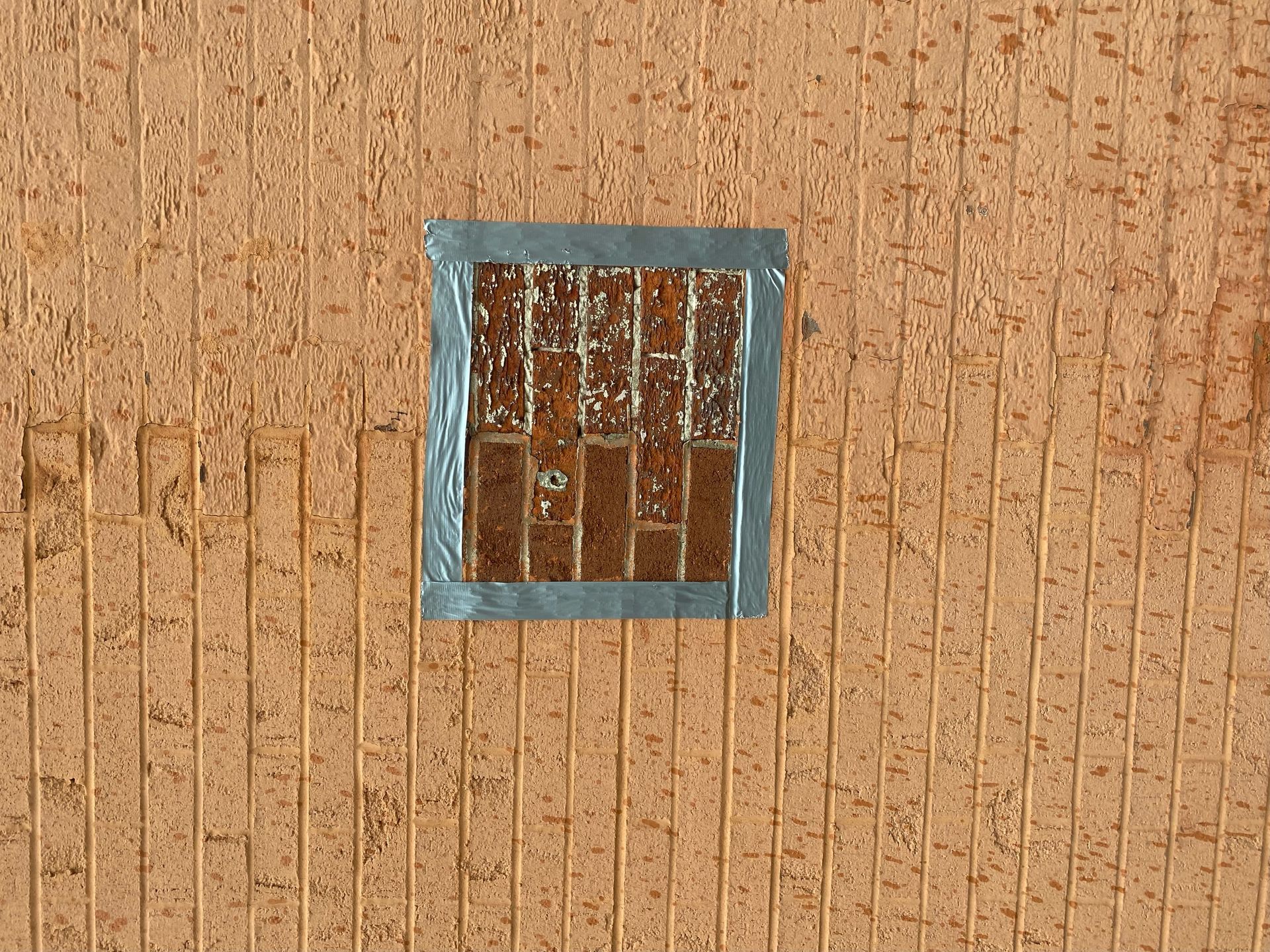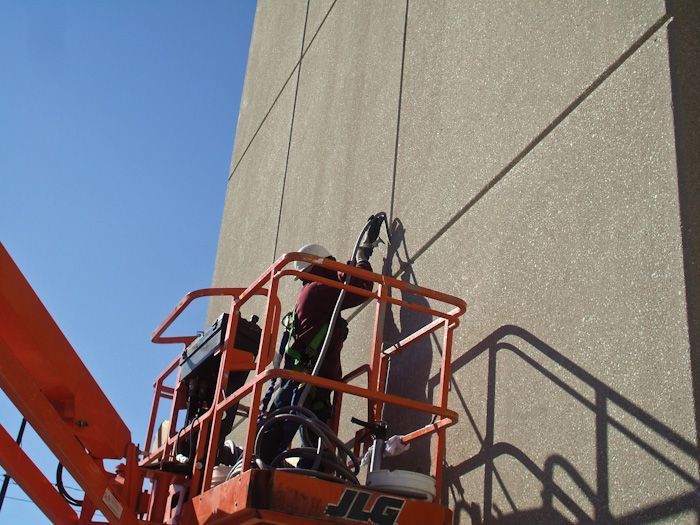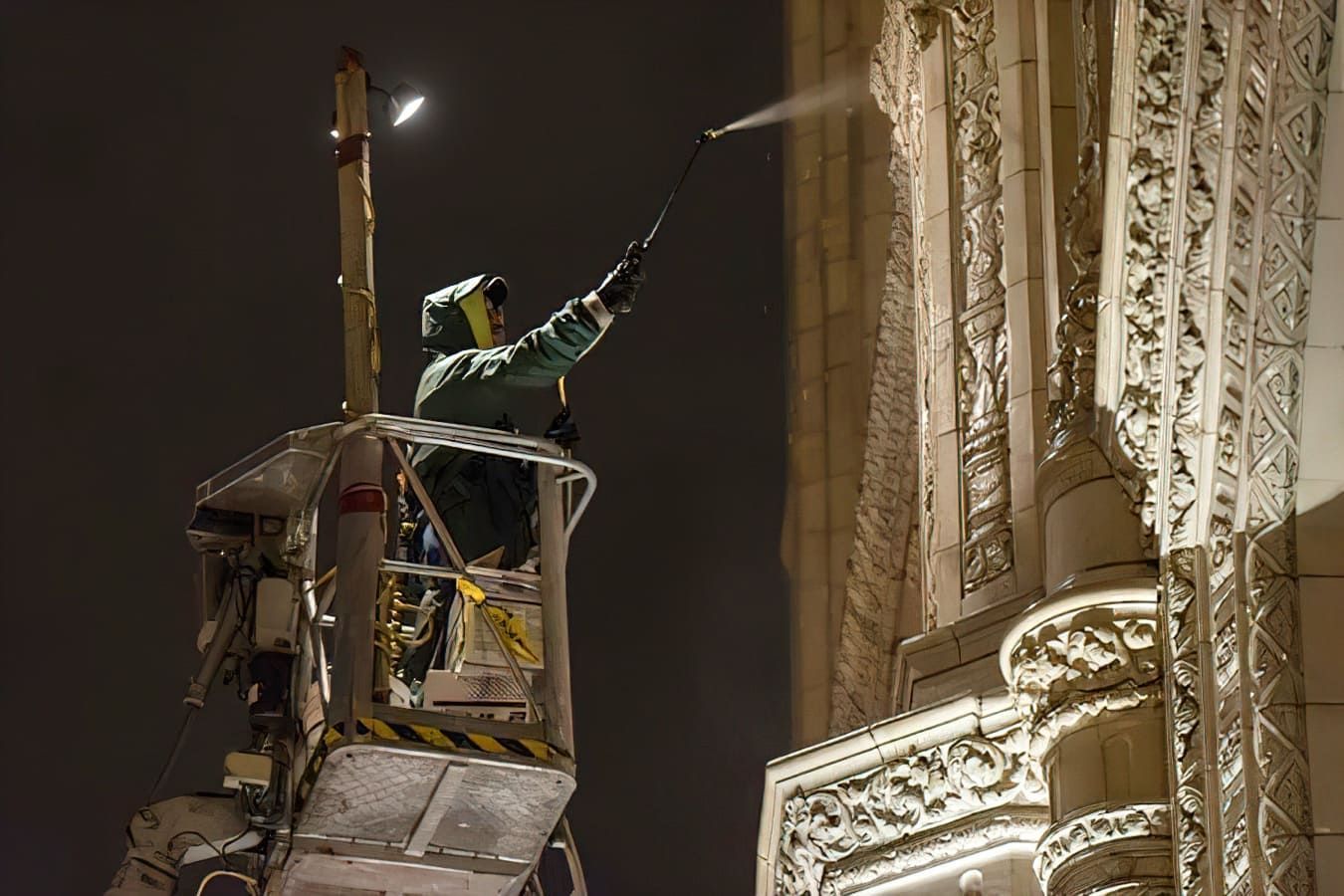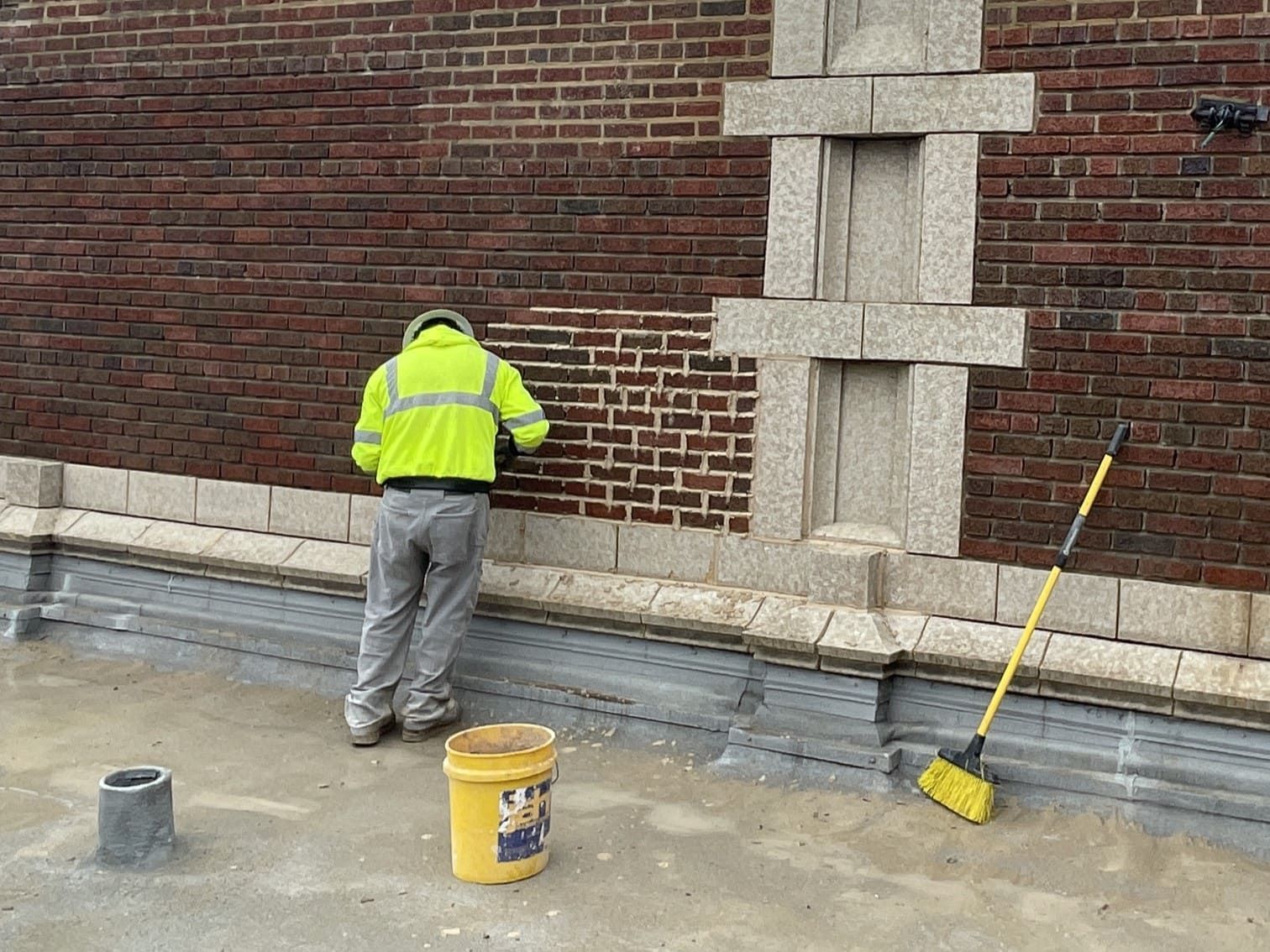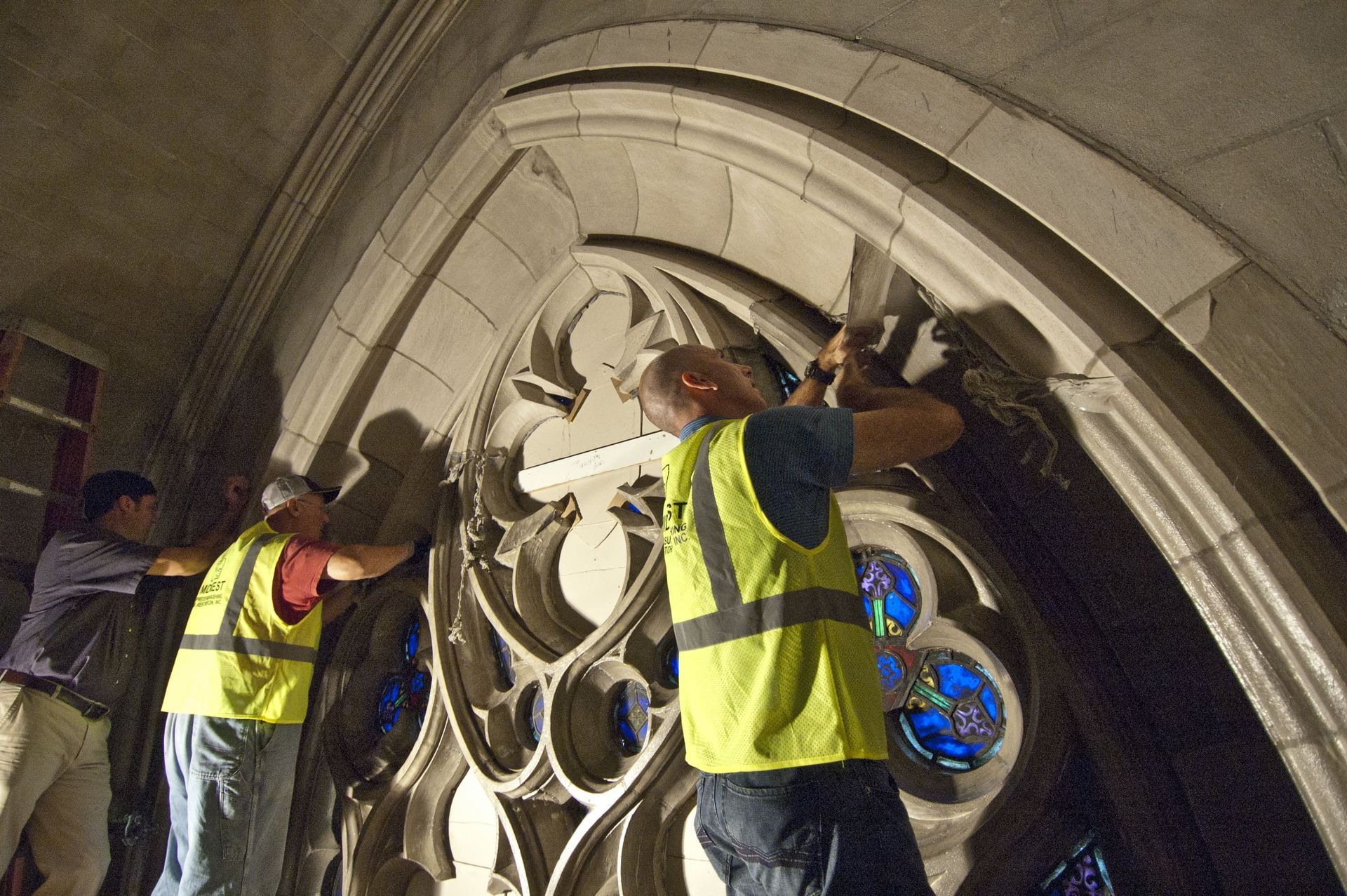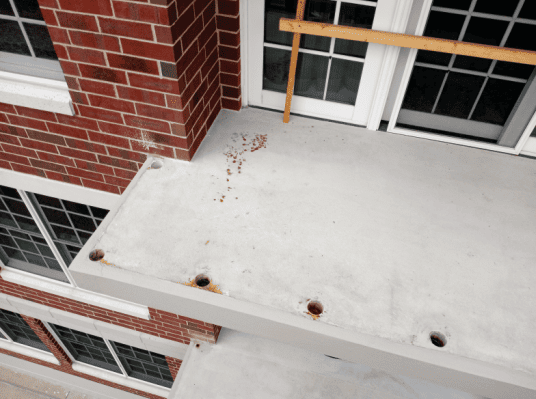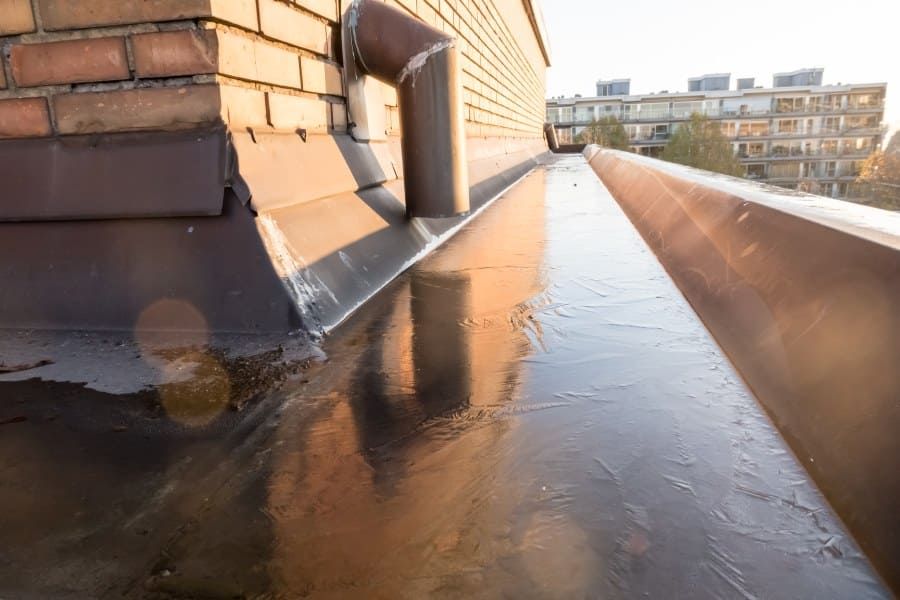As someone who’s spent years restoring Chicago’s iconic brick buildings, we can tell you firsthand that tuckpointing is a necessity. Chicago’s freeze-thaw cycles, heavy rains, and industrial pollution are harsh on commercial concrete facades. Without proper maintenance, the mortar holding those bricks together will deteriorate, leaving commercial masonry restoration as a necessary solution for your building.
Tuckpointing is the solution to that problem, and here’s why it’s so important.
What Is Tuckpointing?
Tuckpointing is an essential process in commercial masonry restoration. It involves removing damaged or deteriorated mortar between bricks and replacing it with new mortar that’s matched in strength, color, and texture to the original. Mortar serves as the first line of defense against water infiltration. When it starts to crumble or wash away, bricks are left exposed, leading to costly problems like spalling (when the face of the brick pops off) or even structural cracking.
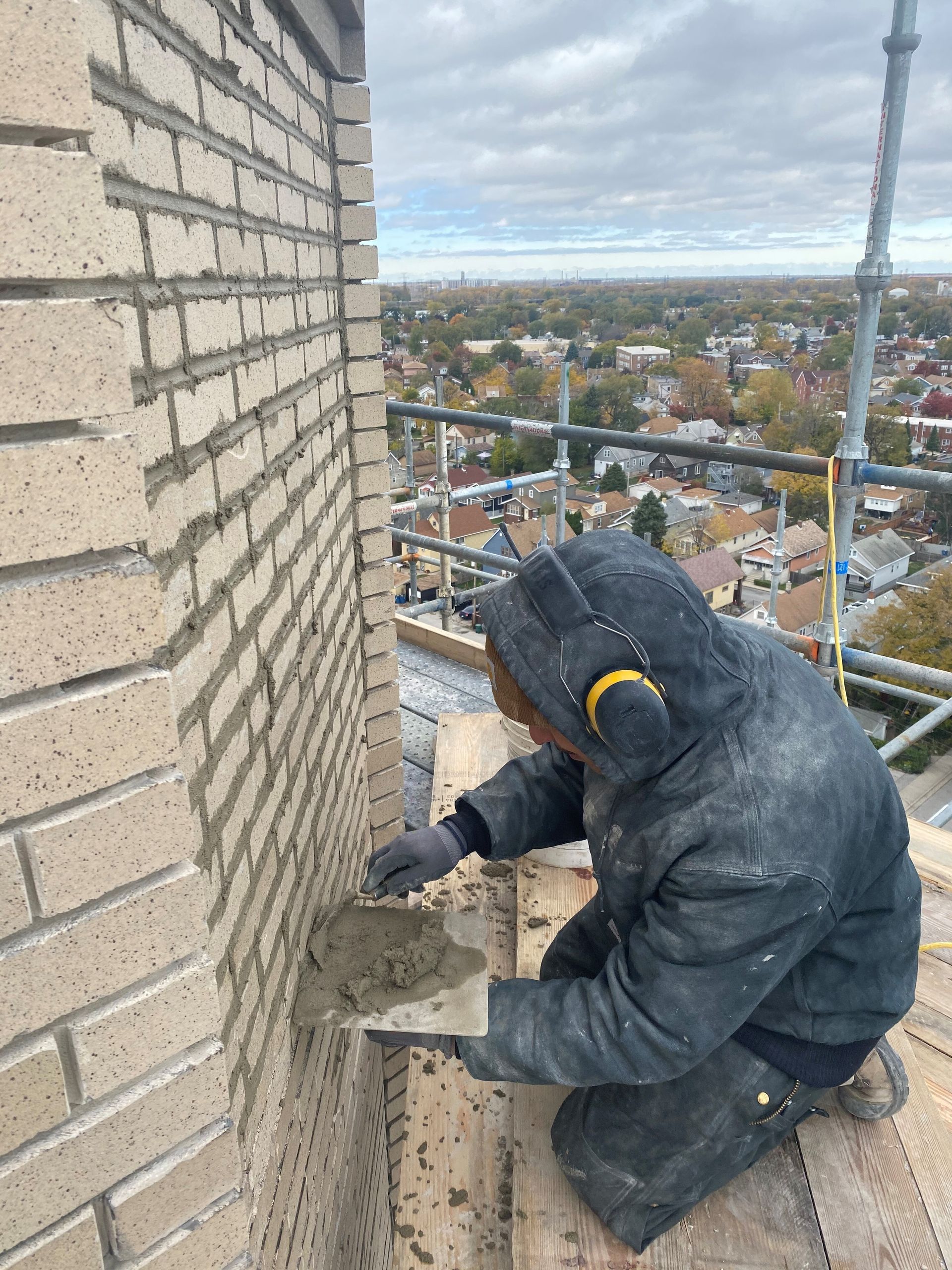
Why Tuckpointing is Essential
1. Prevents Water Damage
One of the biggest threats to brickwork is water infiltration, which is commonly found during commercial concrete façade restoration projects in Chicago. When mortar breaks down, it creates pathways for moisture to enter the wall. In Chicago’s climate, where temperatures change dramatically, that moisture freezes, expands, and becomes destructive to your building's bricks and structure. Tuckpointing seals those entry points, keeping water out and protecting the stability of the wall.
2. Extends Structural Life
Brick is a durable material, but it relies on the mortar for stability. When mortar fails, the bricks begin to shift, weakening the entire wall. Tuckpointing re-binds the bricks, restoring the wall’s strength and preventing further damage.
3. Maintains Appearance
When mortar deteriorates, it can make even the most beautiful brickwork look neglected. Tuckpointing doesn’t just fix the structural issues, it restores the facade to its original look. This is especially important for historic or high-value properties, where appearance matters.
4. Saves Money
Tuckpointing is a preventive measure that’s far less expensive than replacing damaged bricks, or worse, rebuilding an entire wall. Catching these issues early can save you and other property owners substantial money in the long run.
Signs Your Building Needs Tuckpointing
Crumbling or missing mortar: If you can easily scrape mortar out with your fingernail, it’s time for a repair.
Water damage: Look for signs like white salt deposits (efflorescence) or damp interior walls.
Age of the building: Buildings older than 20 years may need tuckpointing, depending on exposure to the elements.
Cracked or loose bricks: These are signs that the mortar is no longer securely holding the bricks.
If you notice cracked bricks, missing mortar, or signs of efflorescence, it may be time to consult a commercial masonry restoration contractor to evaluate your building’s façade.
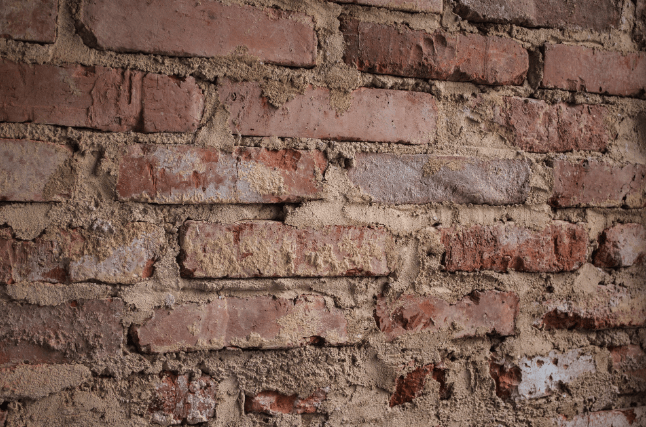
A Real-World Example
We recently worked at Chicago’s iconic Navy Pier. The mortar at the Children's Museum deteriorated to the point that water was seeping through, damaging the interior drywall and insulation. By tuckpointing the facade, we eliminated the water issue, restored the building’s structural strength, and gave it a like-new appearance. The property owner avoided wide-ranging interior repairs and can be comfortable knowing their facade will last for many years.
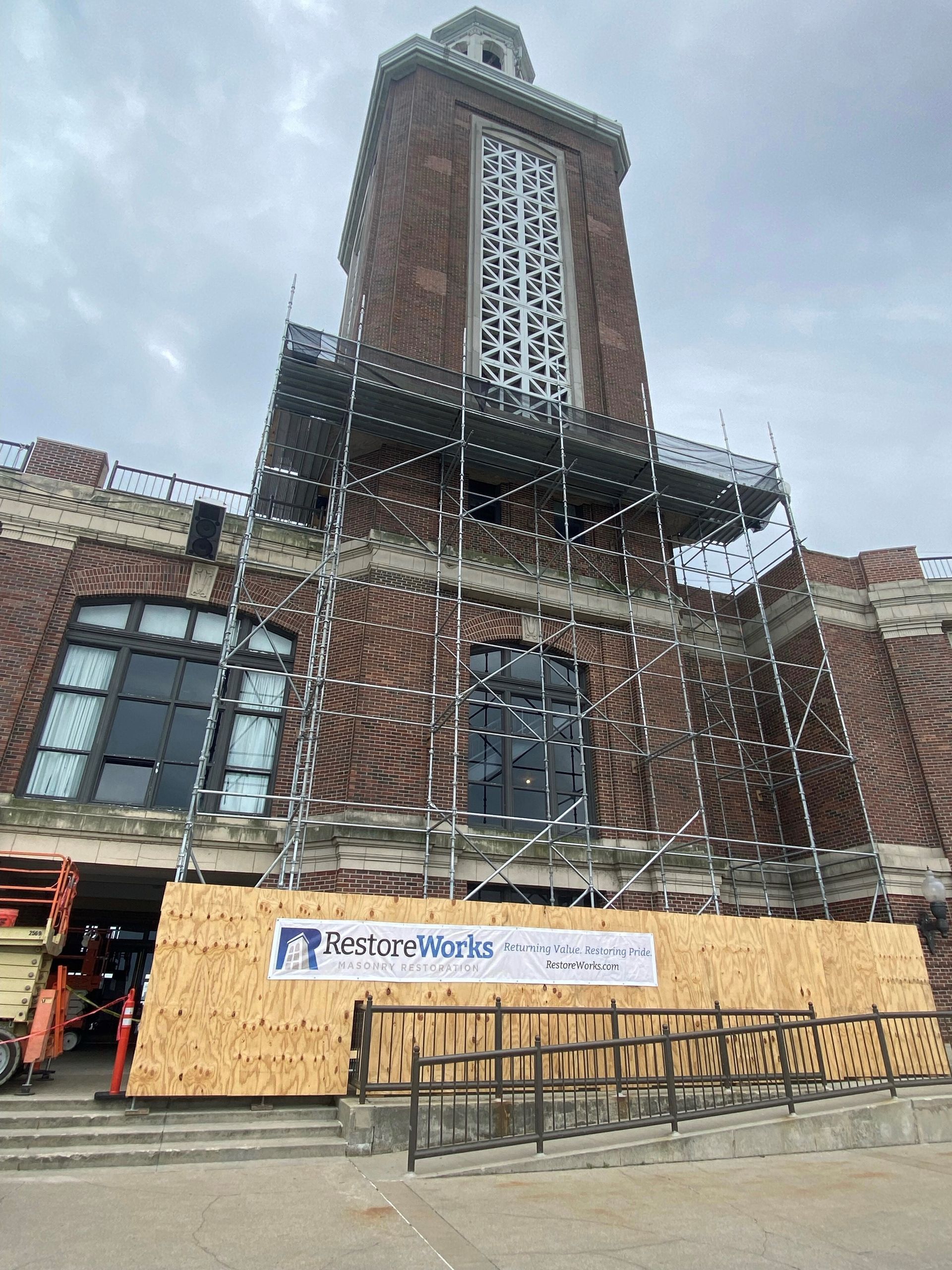
Why RestoreWorks?
At RestoreWorks, our team specializes in masonry cleaning services and commercial concrete and masonry façade repair. We use high-quality materials and techniques designed for each project, ensuring that our work leads to long-lasting results.
Final Thoughts
Tuckpointing is about protecting your building for the future. Whether you’re managing a historic property or commercial landmark, tuckpointing will keep your building’s brickwork safe and strong. Don’t wait until the damage becomes extensive—schedule a professional inspection and invest in your property.
If you’d like to discuss the condition of your building or schedule an evaluation, feel free to reach out to RestoreWorks. We’re here to help you protect your property.

